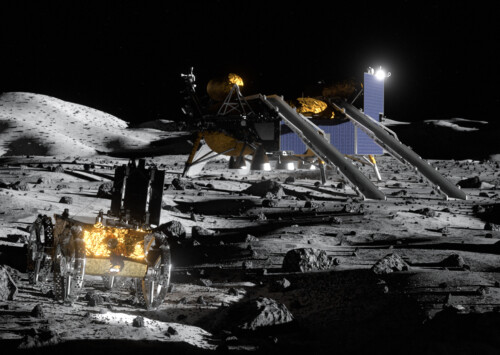A-SMGCS
AIBM
April - June 2018
With a rapid growth in passenger traffic in the world’s fastest growing aviation market, the need of a reliable system of surveillance and regulation of air traffic in India heightens.
Domestic airline passenger traffic rose at its fastest pace in 13 months in February, usually a lean month, as more than 10.7 million Indians took to the skies. Passenger traffic grew 24 percent the year-ago,” according to data released by the Directorate General of Civil Aviation (DGCA), on the back of improving affordability, low penetration and favourable government policies.
The regulation of air traffic is integral to avoiding accidents and ensuring that airlines arrive and depart on time. The Airports Authority of India (AAI) has drawn plans to upgrade Air Traffic Management (ATM) infrastructure in the country, both in terms of conditional provision of automation systems and upgradation of technology. This also involves shifting from ground-based navigation to satellite-based navigation.
For instance, the Advanced Surface Movement and Guidance & Control System (A-SMGCS) is a proven, reliable and standards compliant system that provides surveillance on the runway, taxiways, stands, and on approach. It enhances a controller’s ability to manage airport traffic in all visibility and weather conditions.
Multiple Advanced Features
A-SMGCS comprises all the expected functional elements of a high end A-SMGCS system that includes Human Machine Interface (HMI), surveillance, safety nets, routing, and guidance.
It features an intuitive and easy to use Controller Working Position (CWP) that displays an integrated ground/air traffic picture. The CWP tailors the information that is presented based on roles and areas of responsibility, reducing a controller’s workload.
It is a flexible and scalable solution that can be integrated with many ATM or airport systems and can grow to accommodate changing airport needs.
Human Machine Interface (HMI)
CWP provides the controller with a clear picture of movements on the airport surface and in the approach volume. It presents viewable maps, tracks, labels, safety alert indicators as well as system status. Multiple traffic windows can be presented concurrently. Flight information is presented in the form of labels and flight lists, such as arrival or departure lists. A “strip-less” mode of operation is supported through interaction with labels and lists. A key CWP capability is its adaptability, based on controller roles, areas of responsibility and user profiles.
Safety Nets
The Safety nets continually predict trajectories of aircraft and vehicles operating on the airport surface and issues an audible and visual alert if aircrafts and/or vehicles generate a conflict situation.
A-SMGCS supports the advanced safety net categories defined by Eurocontrol and Eurocae for compliance with the Pilot Common Project (PCP):
- Runway Monitoring and Conflict Alerting (RMCA)
- Conflicting ATC Clearances (CATC)
- Conformance Monitoring Alerts for Controllers (CMAC)
Surveillance
Surveillance of the airport surface and surrounding airspace is the most fundamental function of any A-SMGCS system. The surveillance element is comprised of several sensor systems, which are integrated via a data fusion system. The A-SMGCS can integrate its own sensors, such as MLAT and SR-3 SMR, or existing airport sensors such as:
- Cooperative Sensors: Multilateration, ADS-B, Vehicle Tracking systems, Secondary Surveillance Radar (SSR)
- Non Cooperative Sensors: Surface Movement Radar (SMR), Primary Surveillance Radar (PSR)
- Multi Sensor Fusion fuses: all surveillance sources into A-SMGCS tracker which provides a high quality track output free of false tracks
Guruprasad Mohapatra, Chairman, AAI told AIBM that integrating A-SMGCS has been an important step towards improving efficiency of the organisation. “The AAI has inducted new technologies like A-SMGCS at five airports to enhance surveillance capability at airports and near vicinity in addition to RADARs. It will enable airports to operate in a safe manner while efficiently meeting the demand of growing air traffic,” he stated. Currently, A-SMGCS are installed at airports in Delhi, Mumbai, Kolkata, Chennai, Bengaluru, Hyderabad, Jaipur, Lucknow, Guwahati, Ahmedabad an d Amritsar; and are being installed at Bhubaneshwar and Cochin airports.










